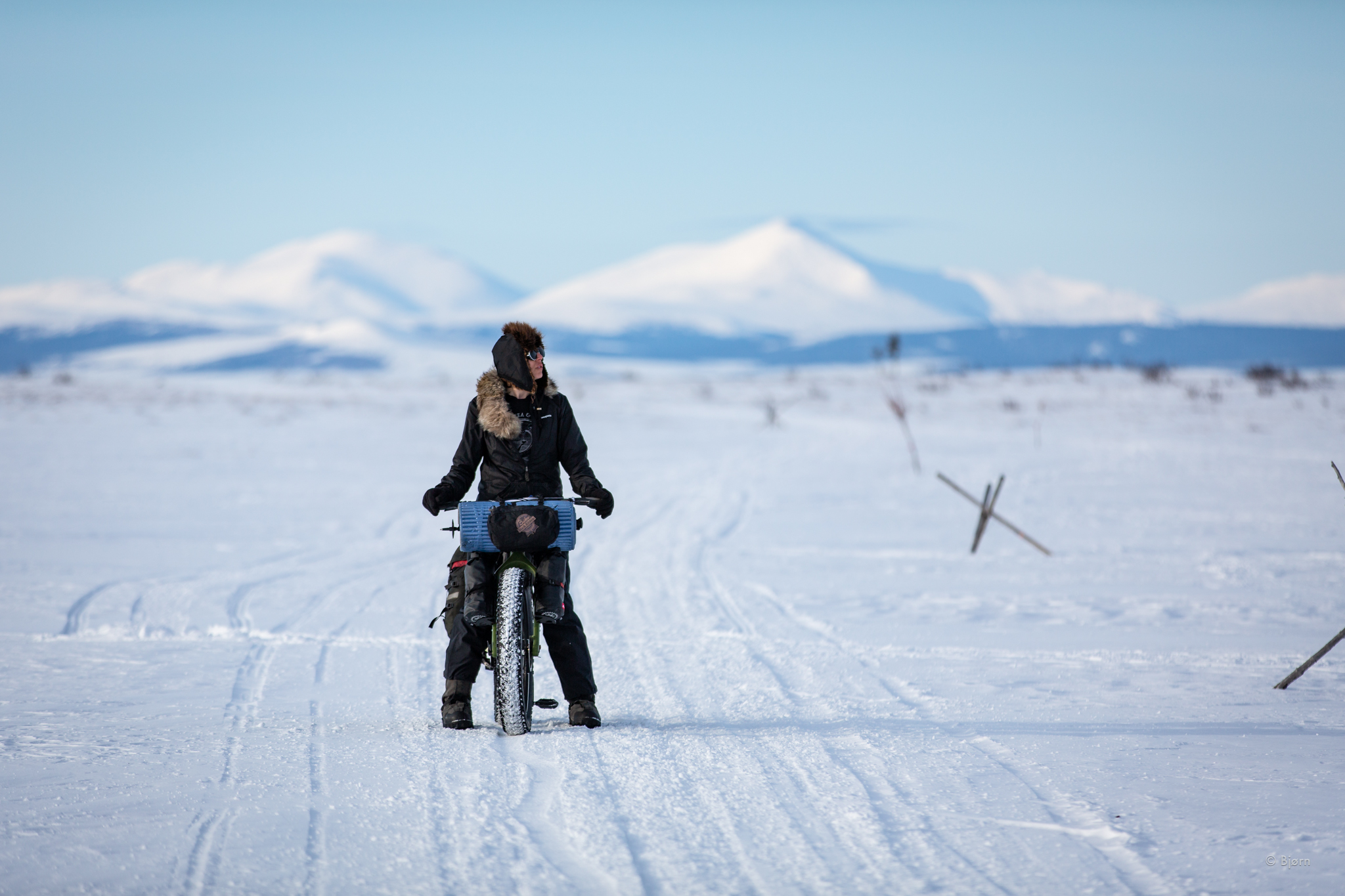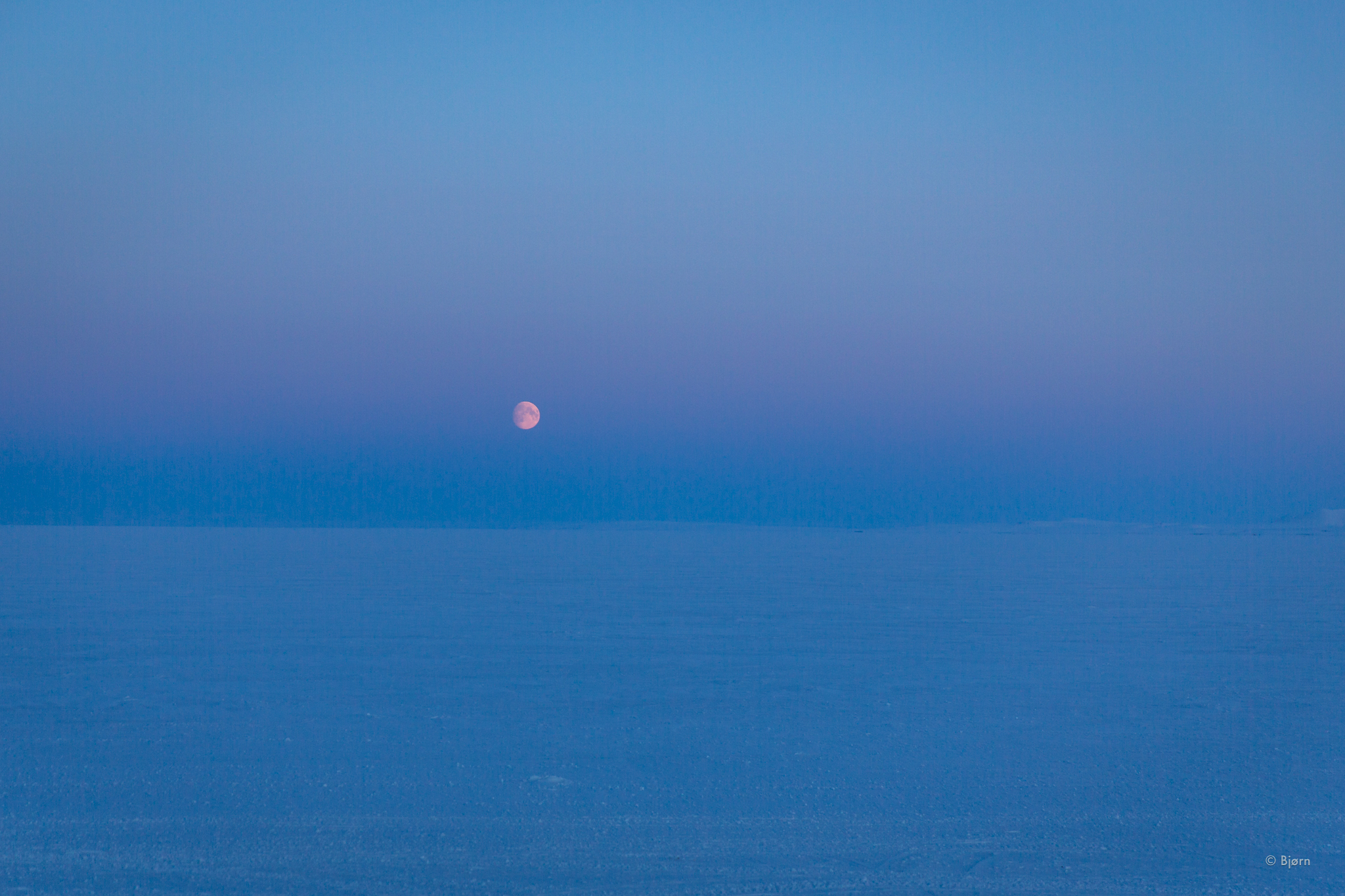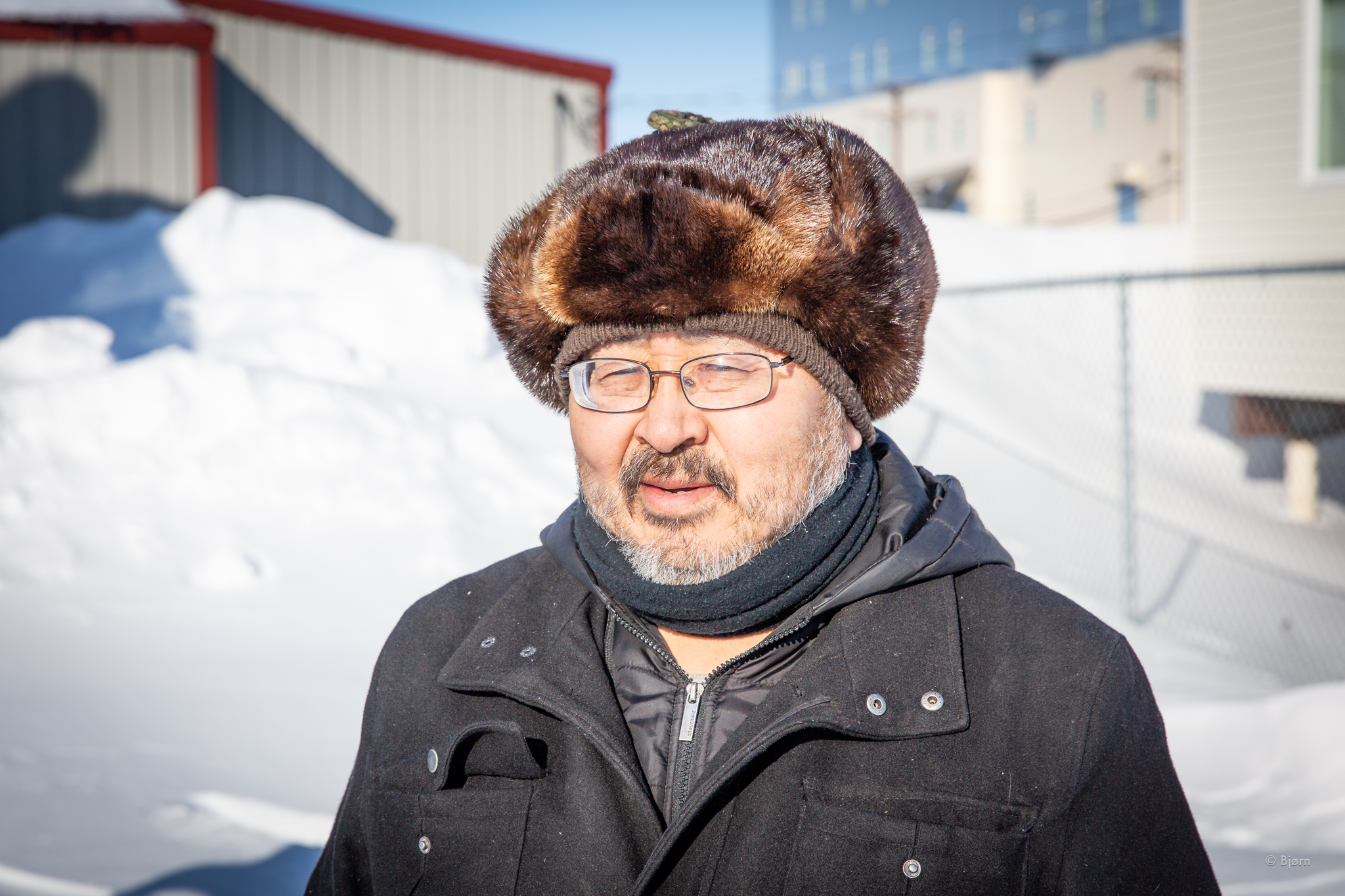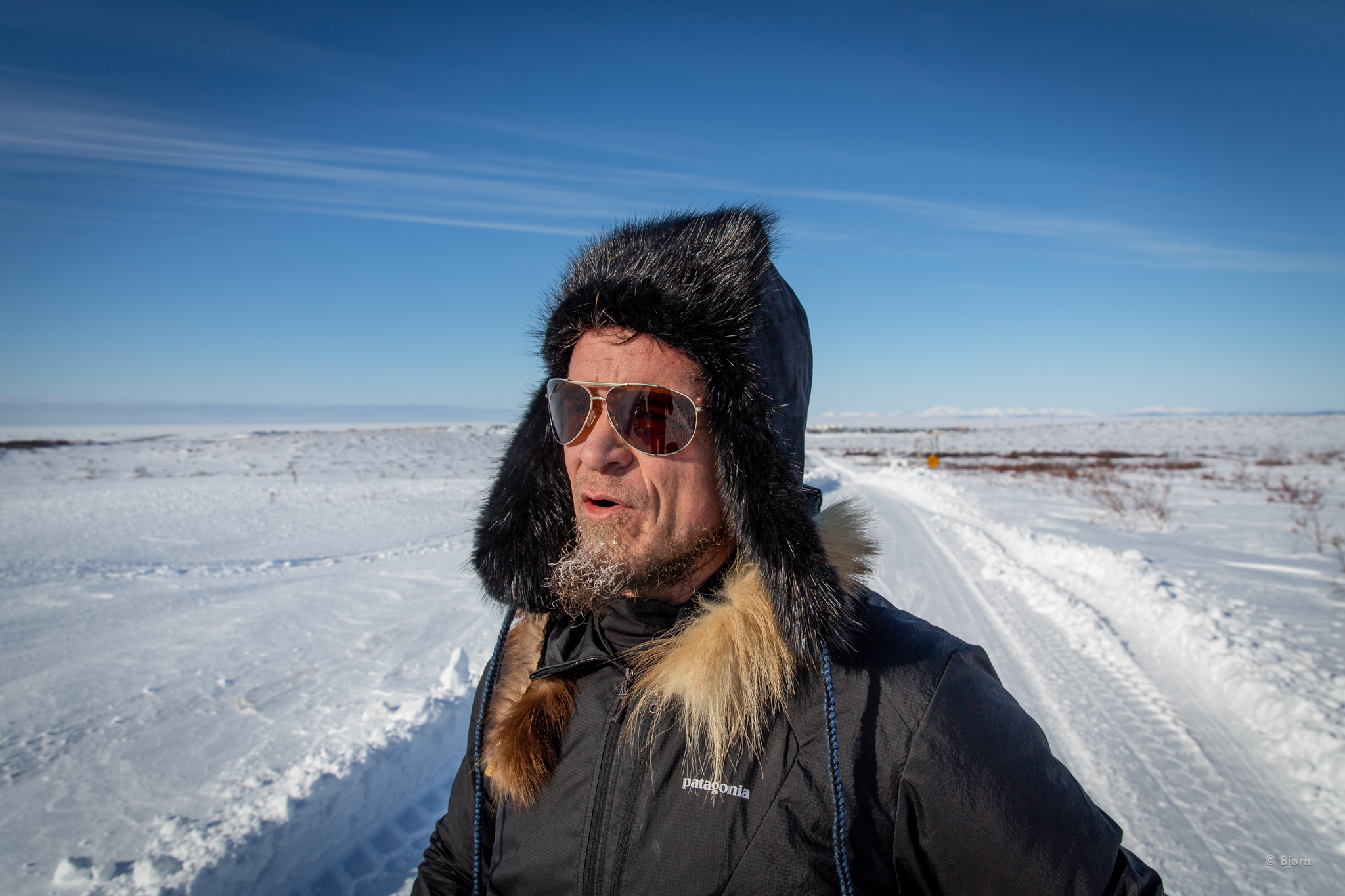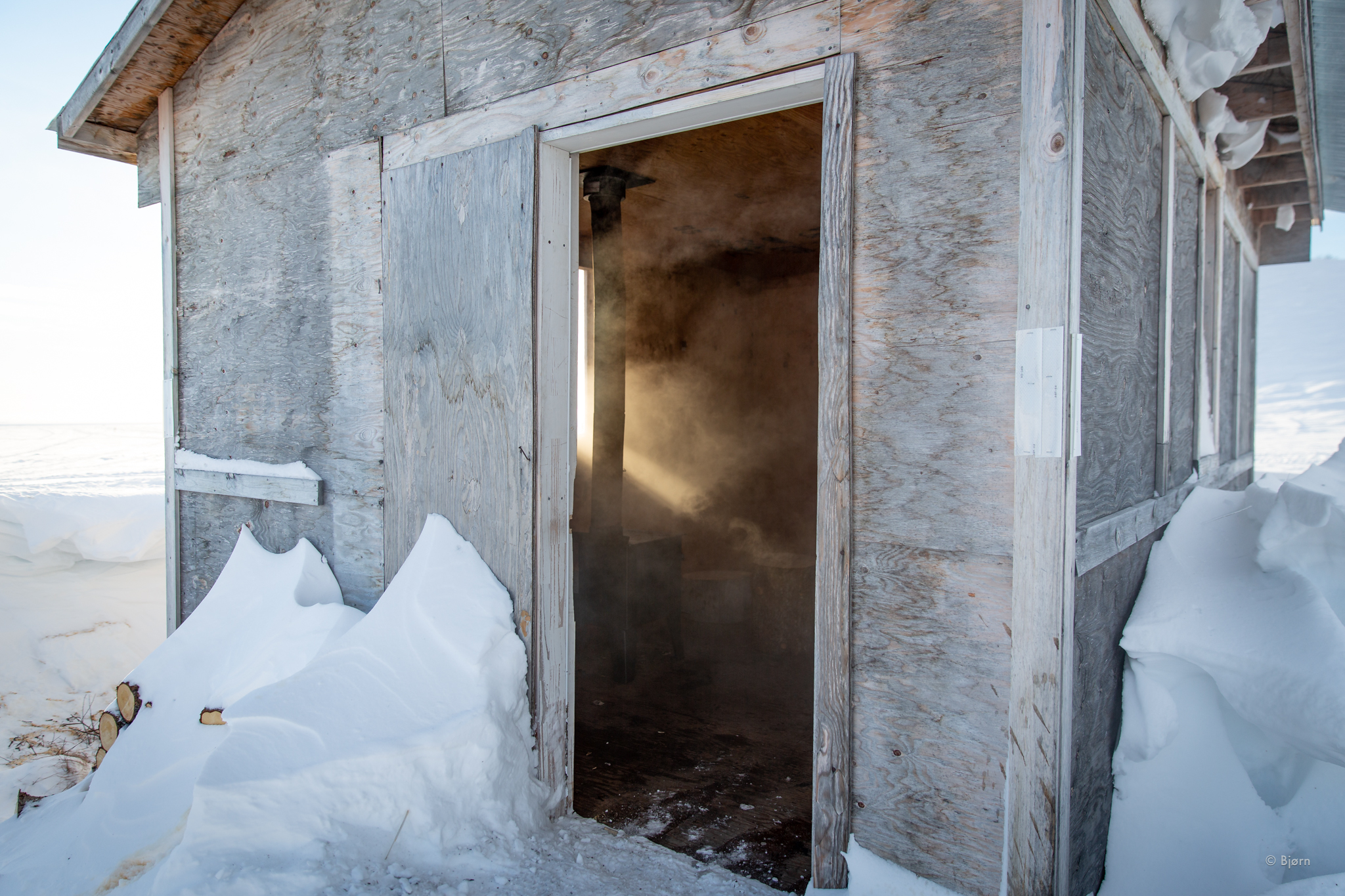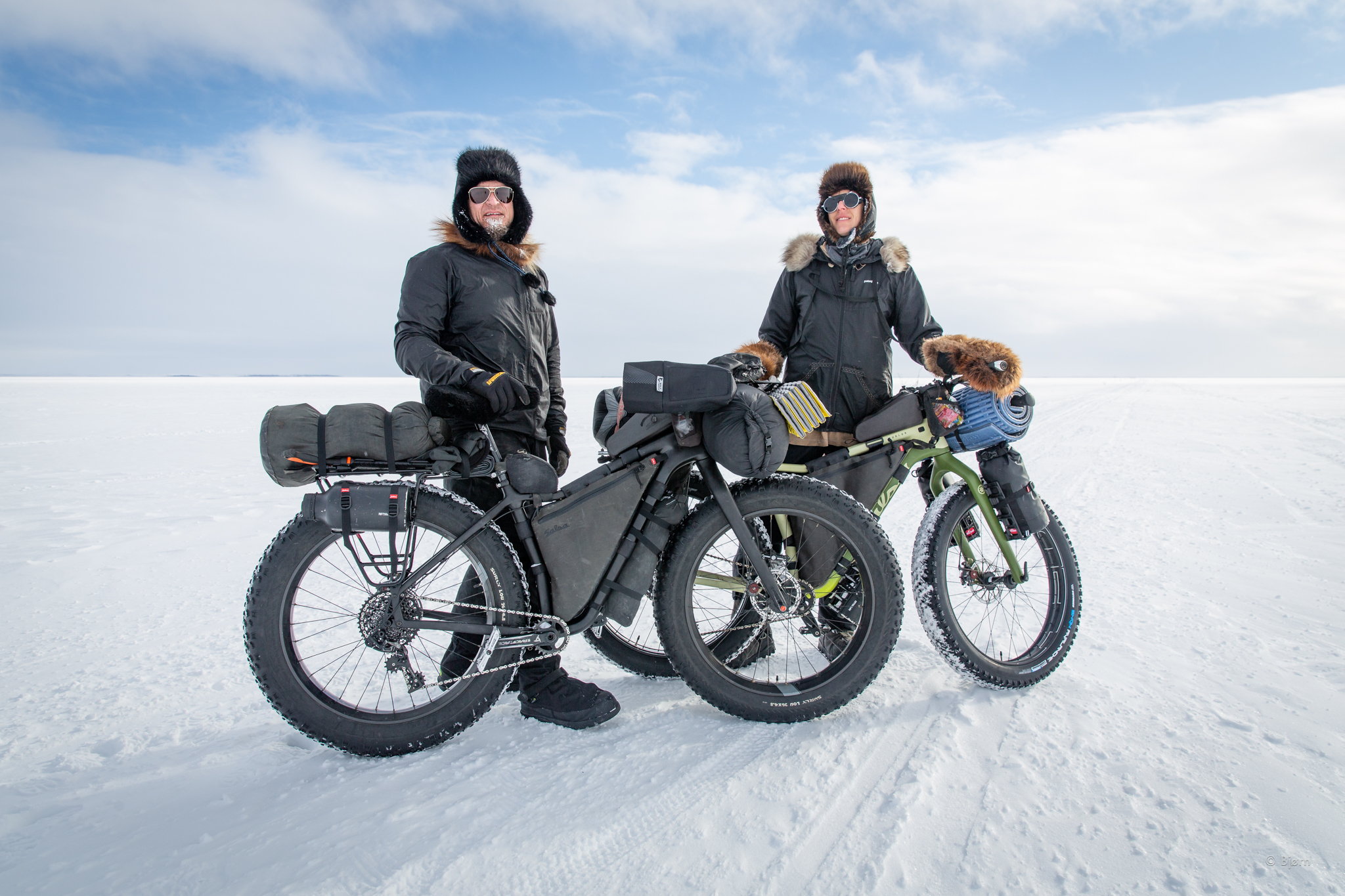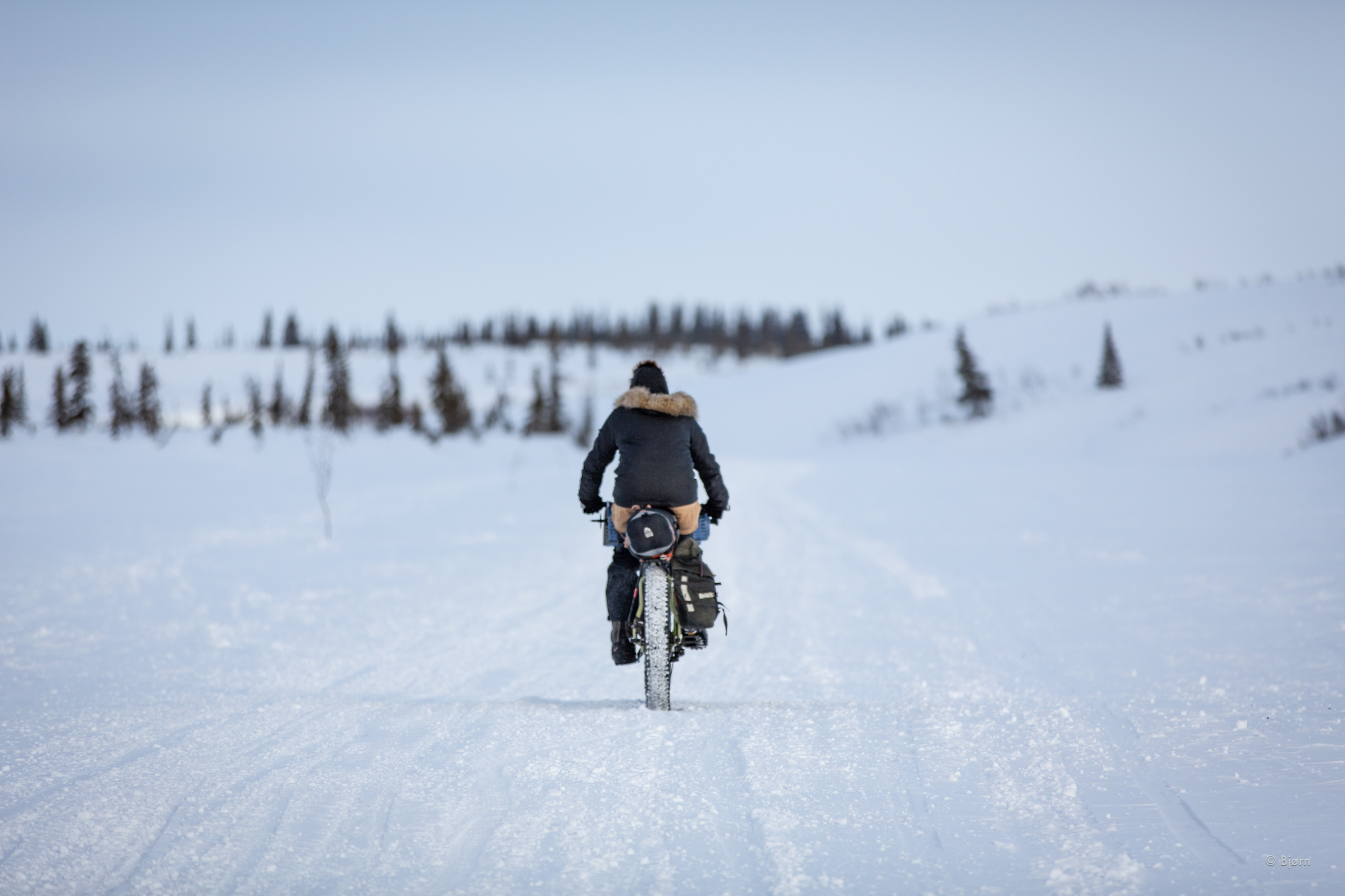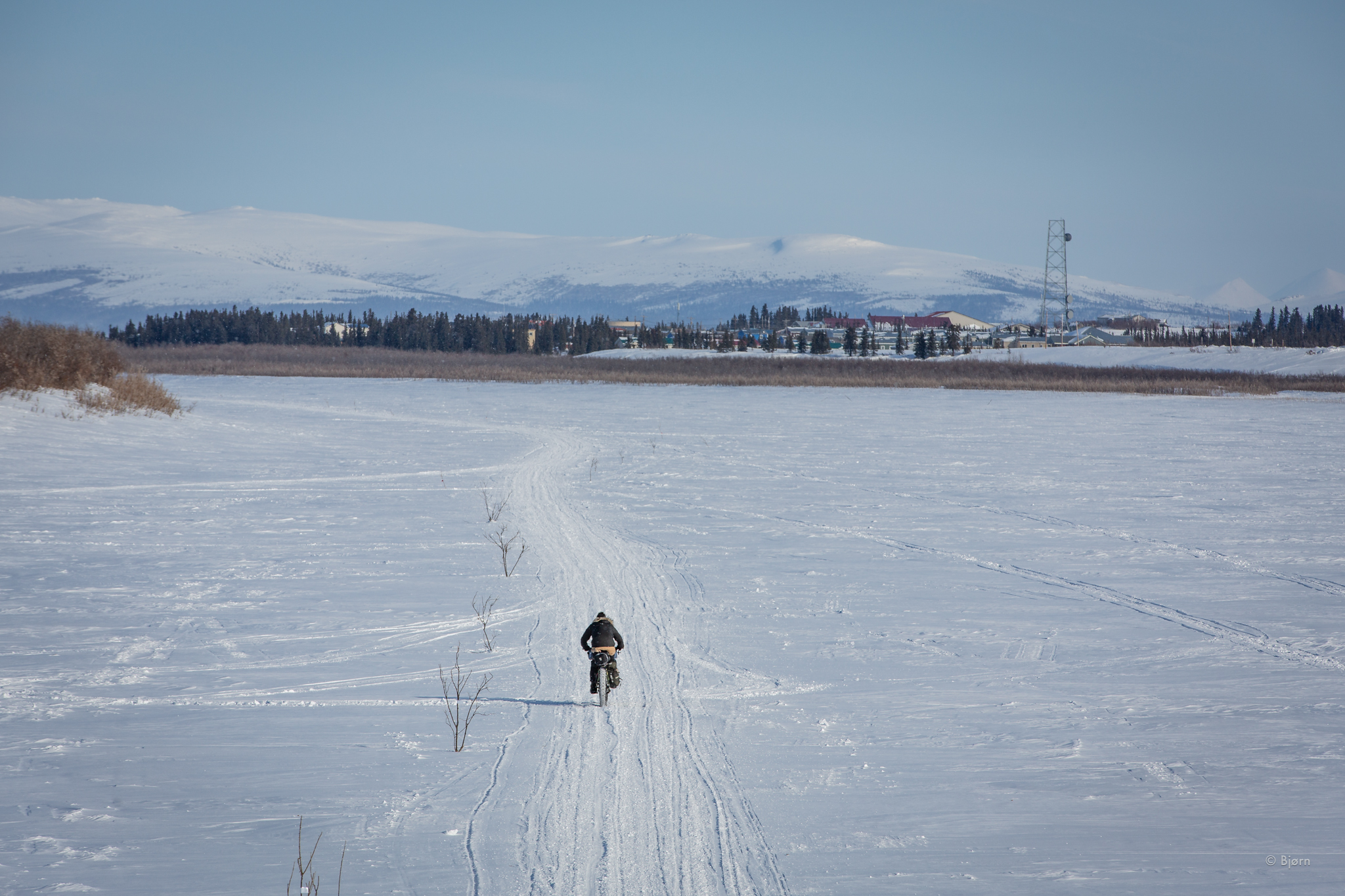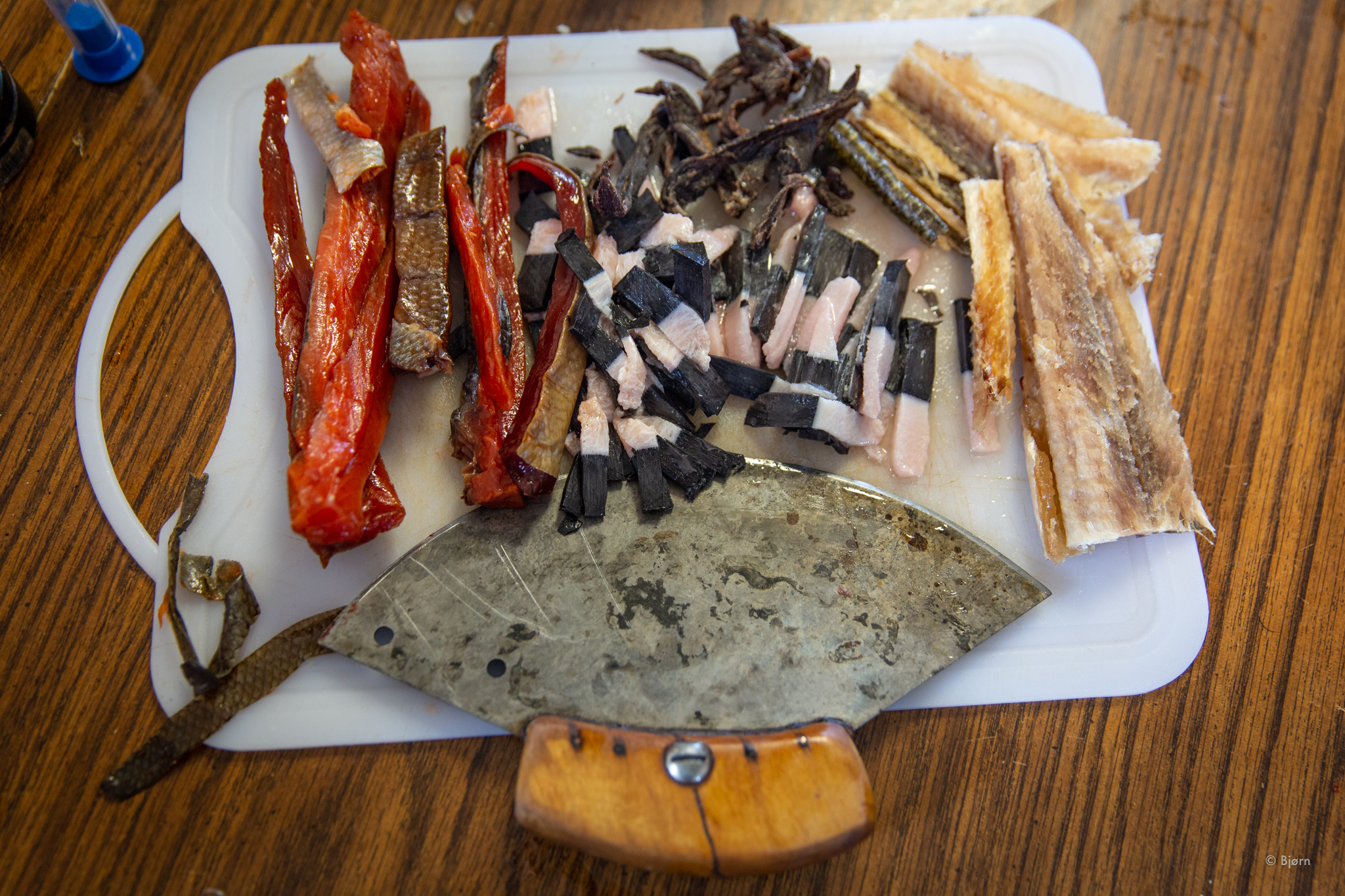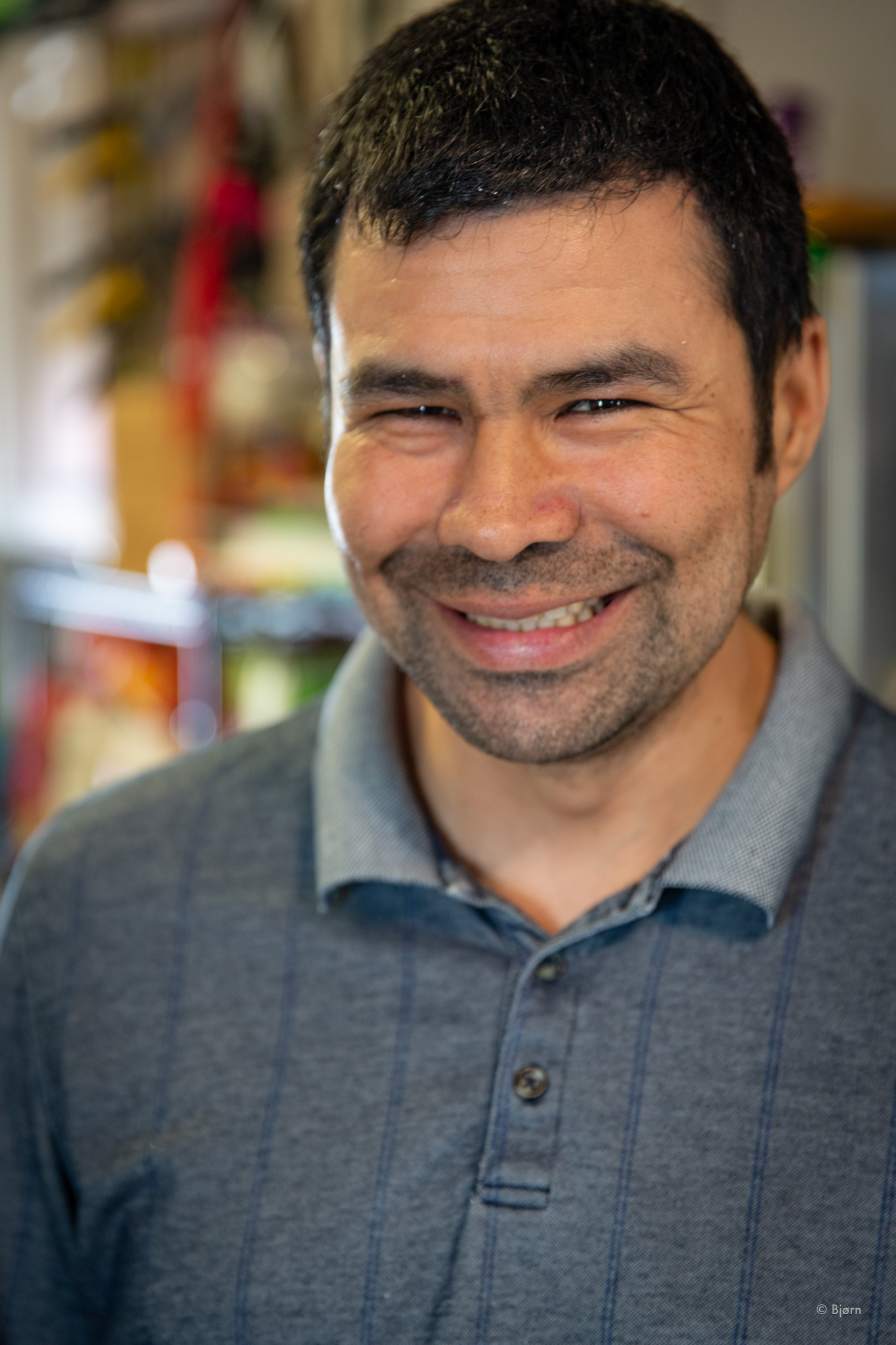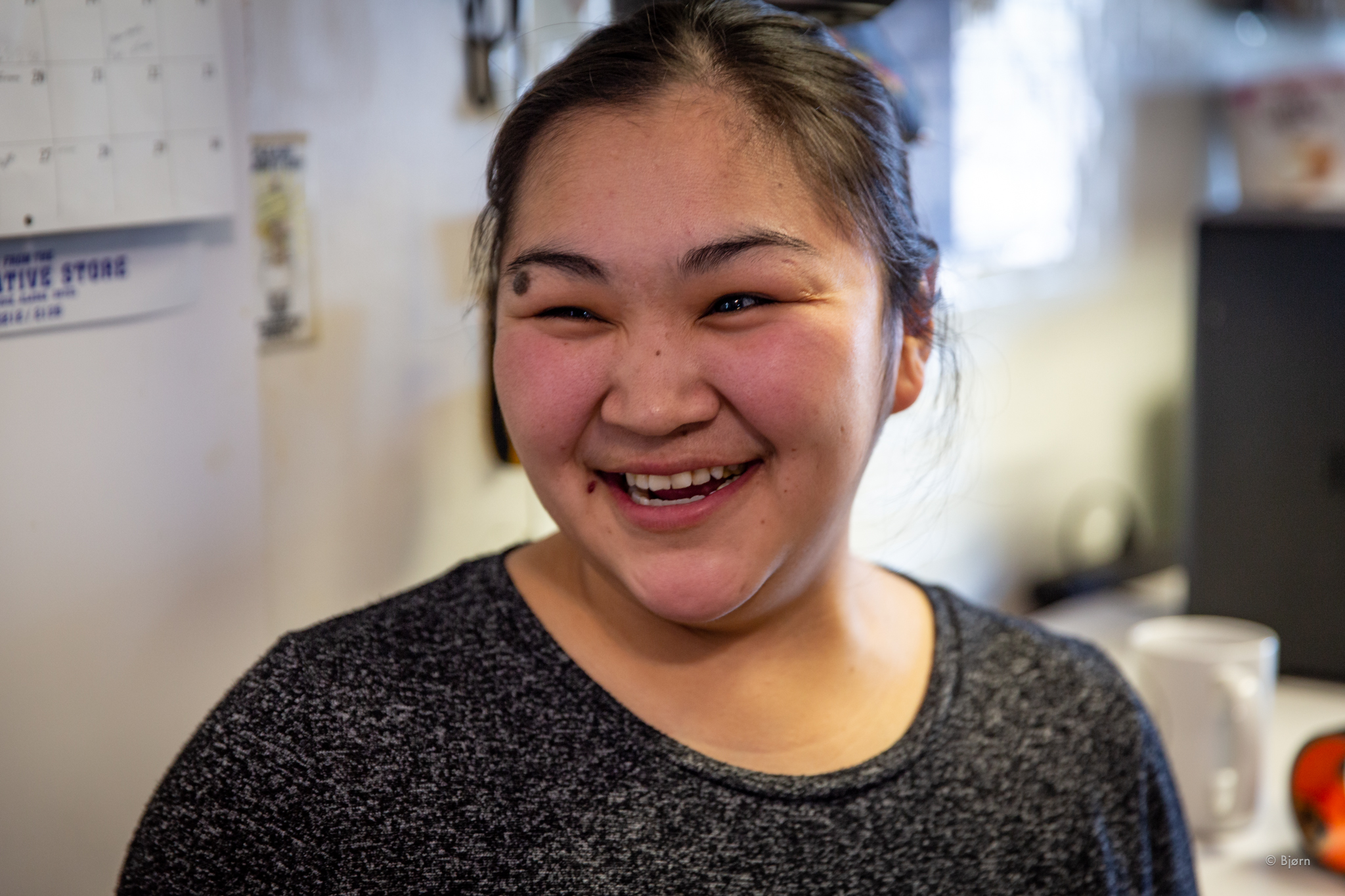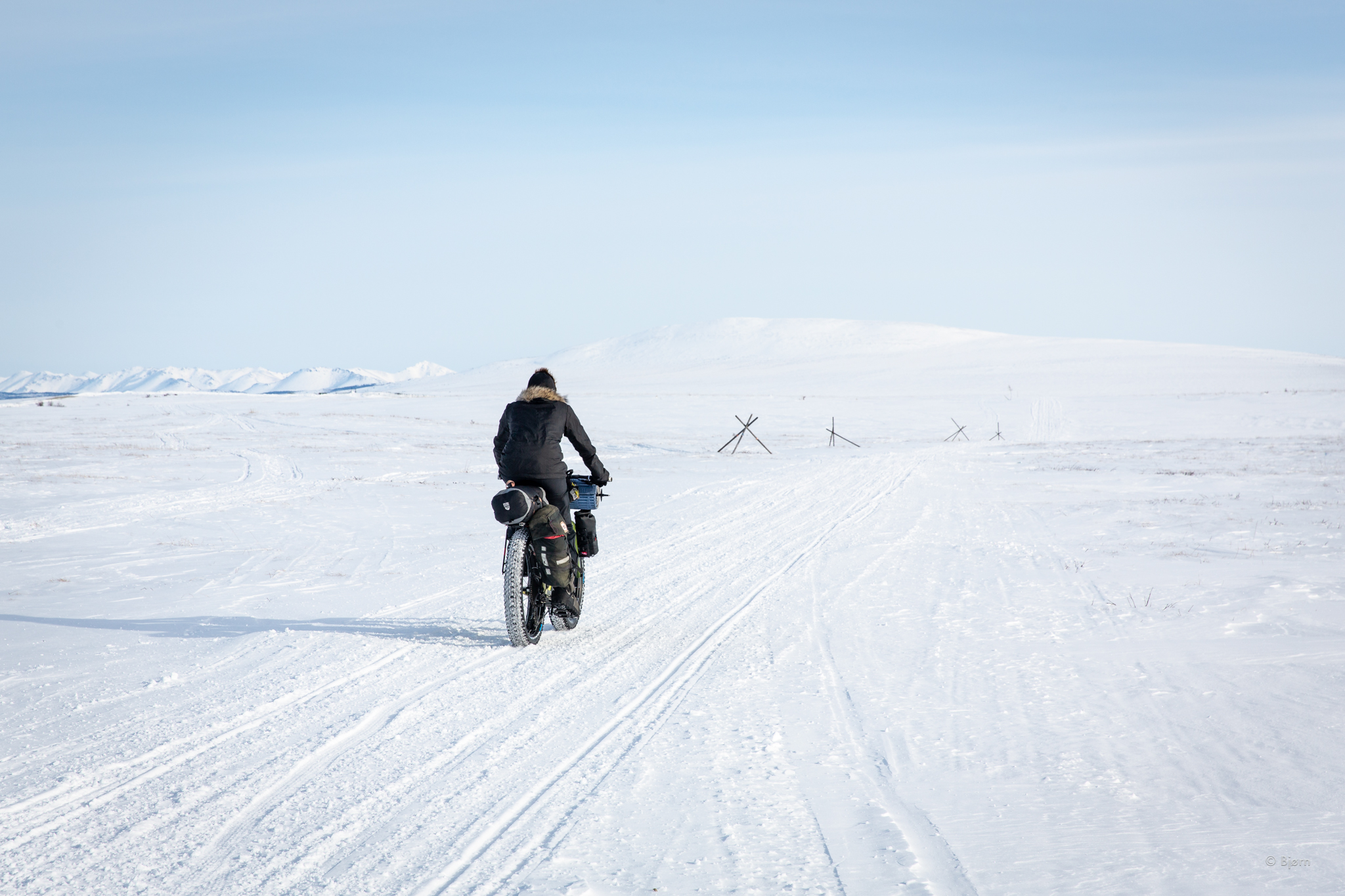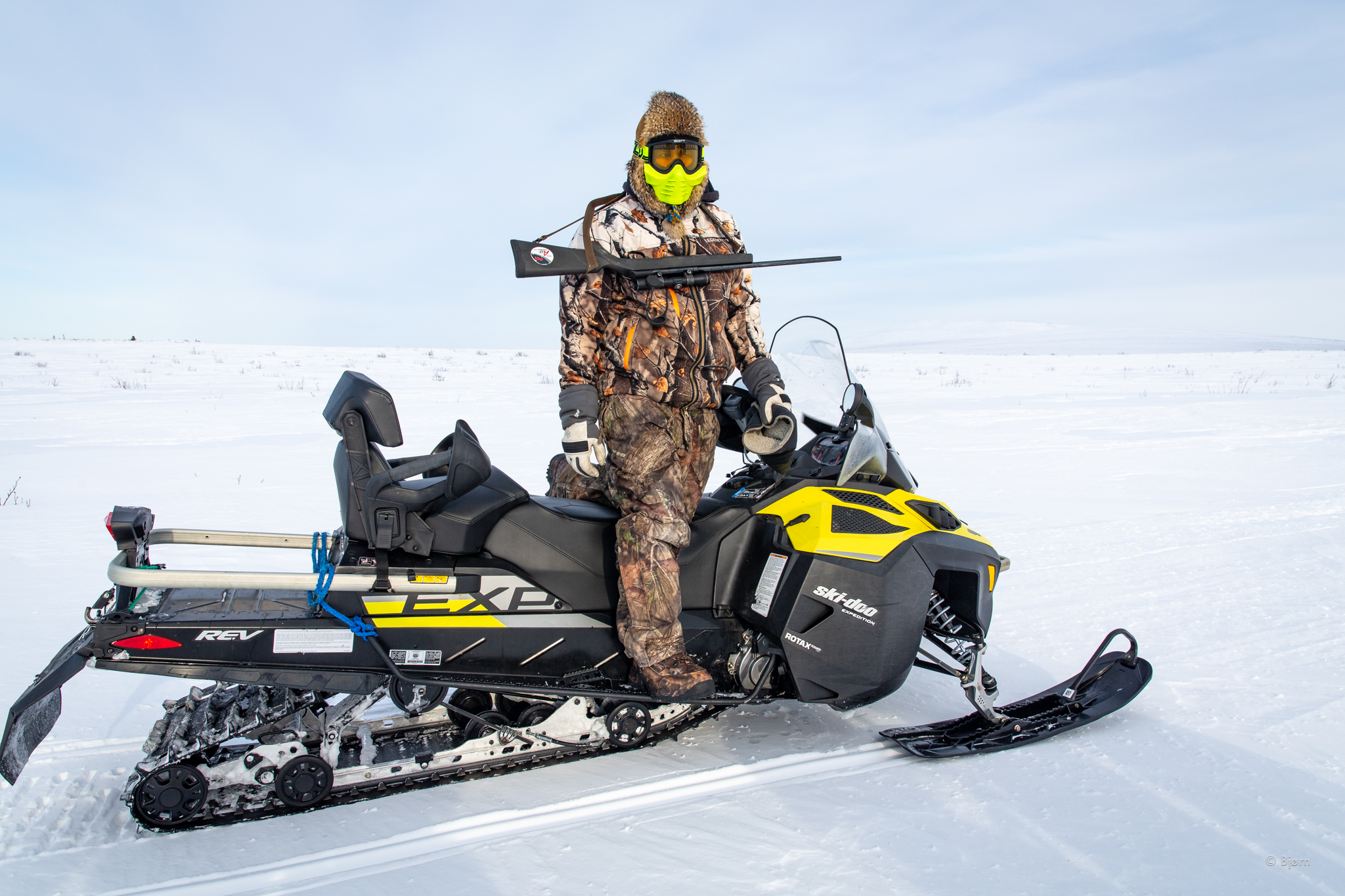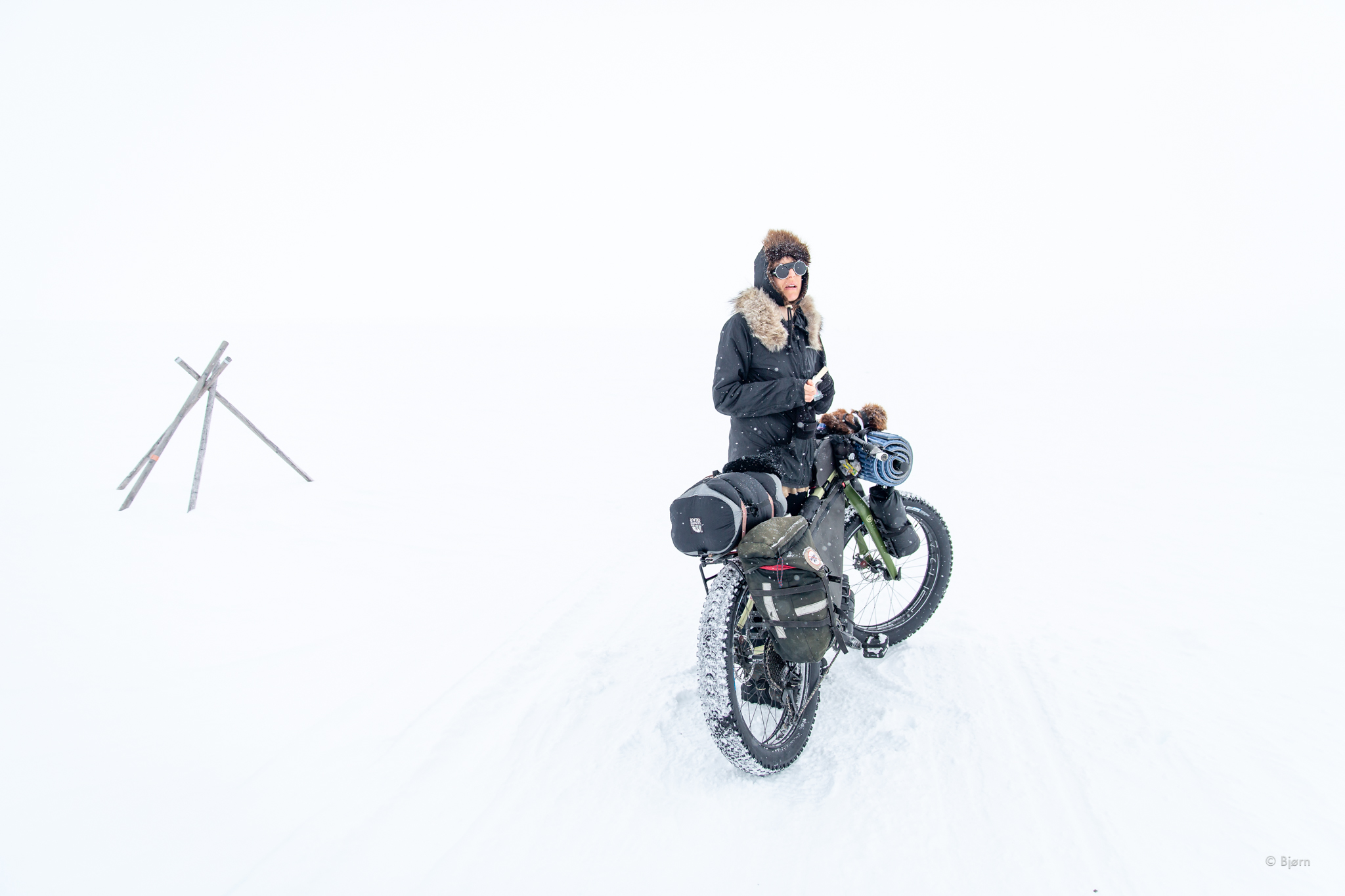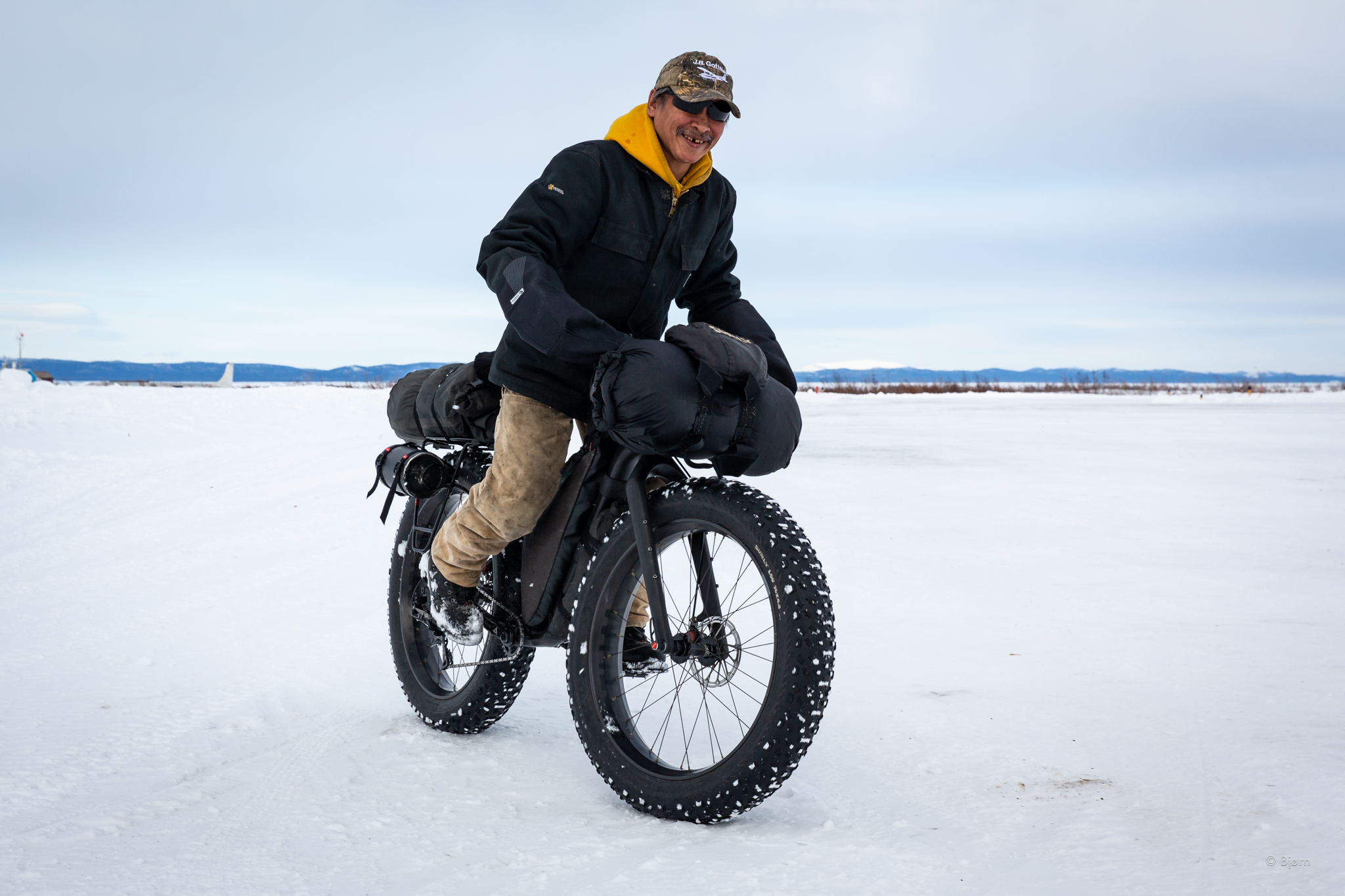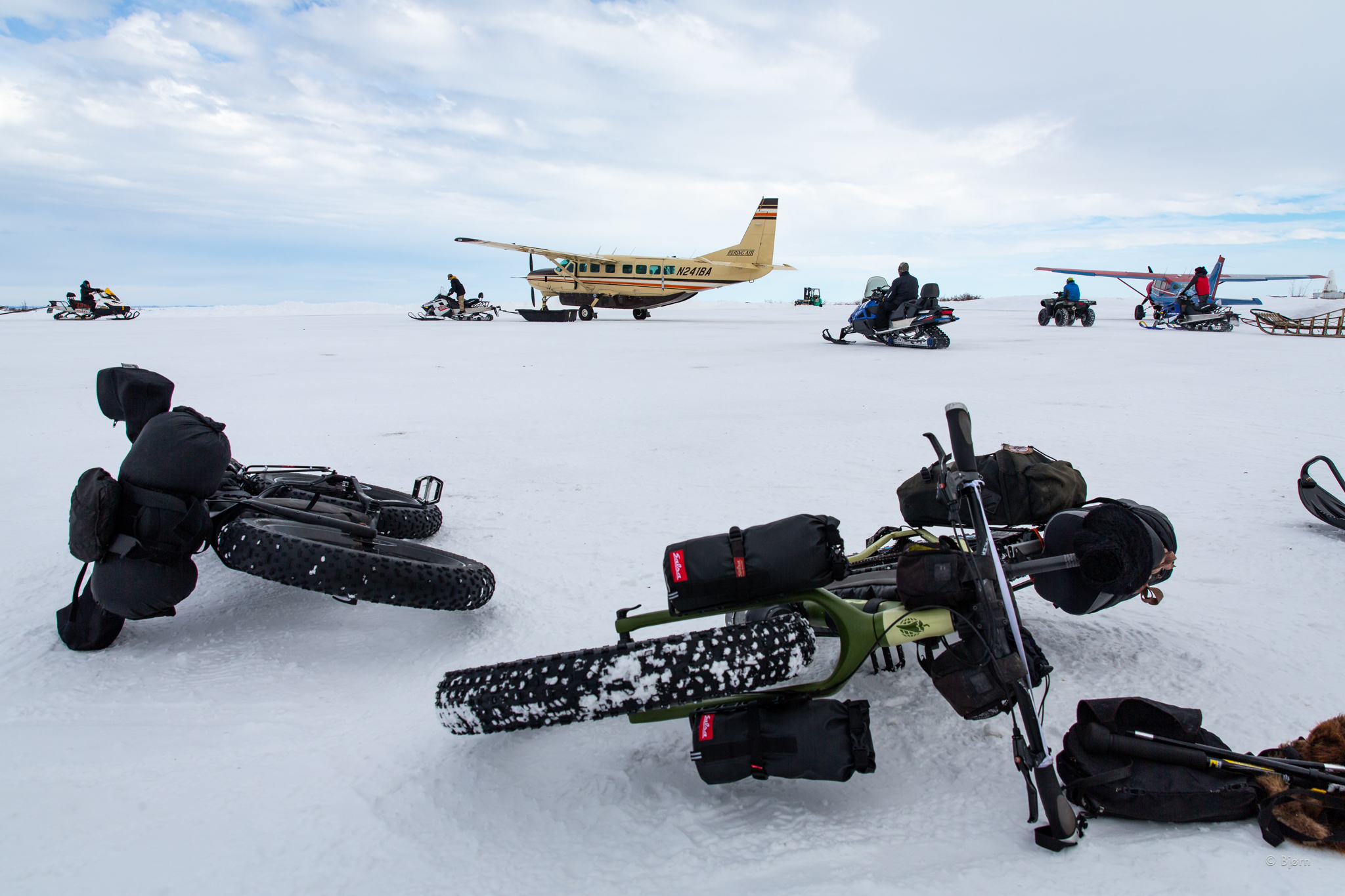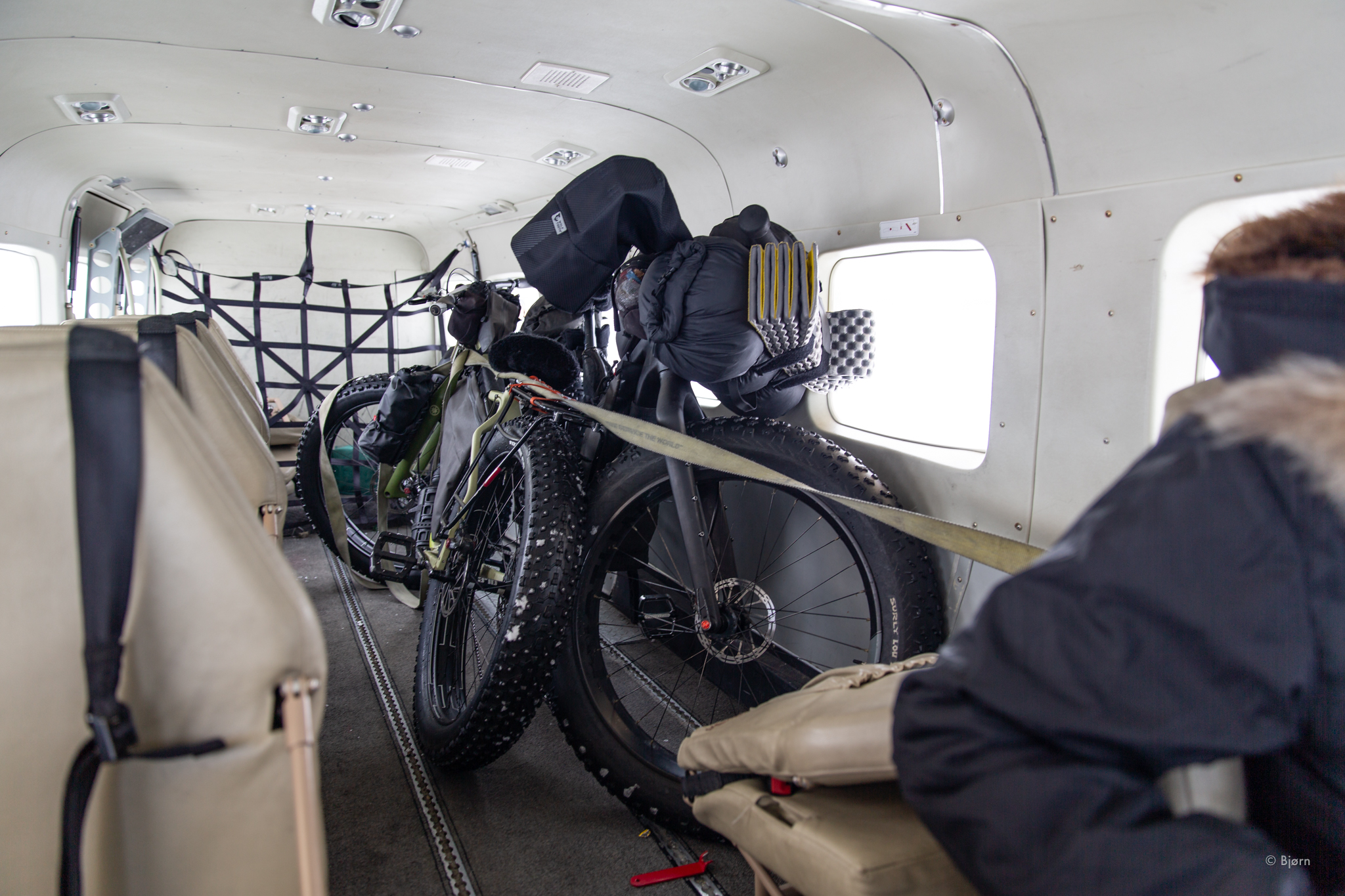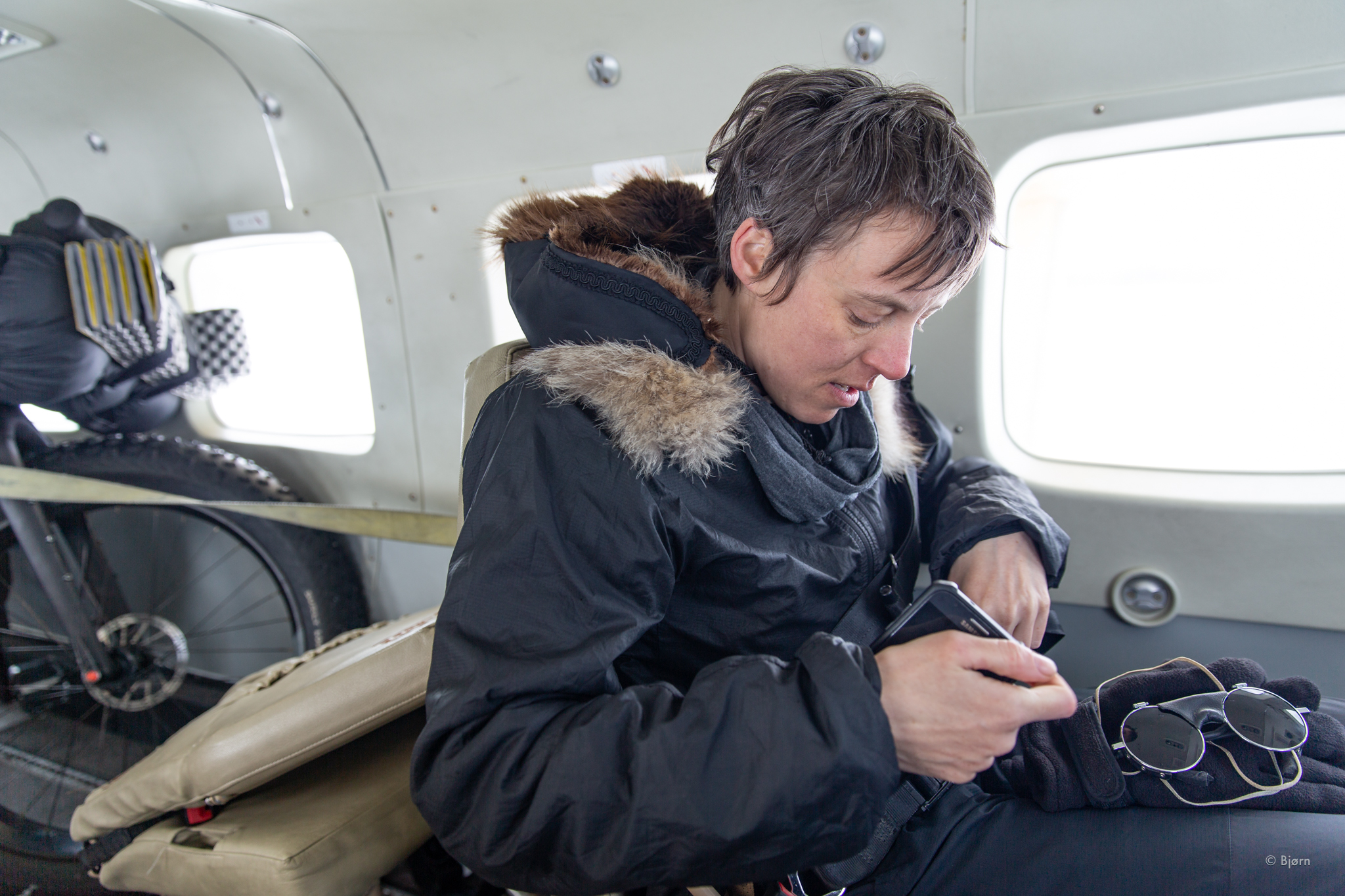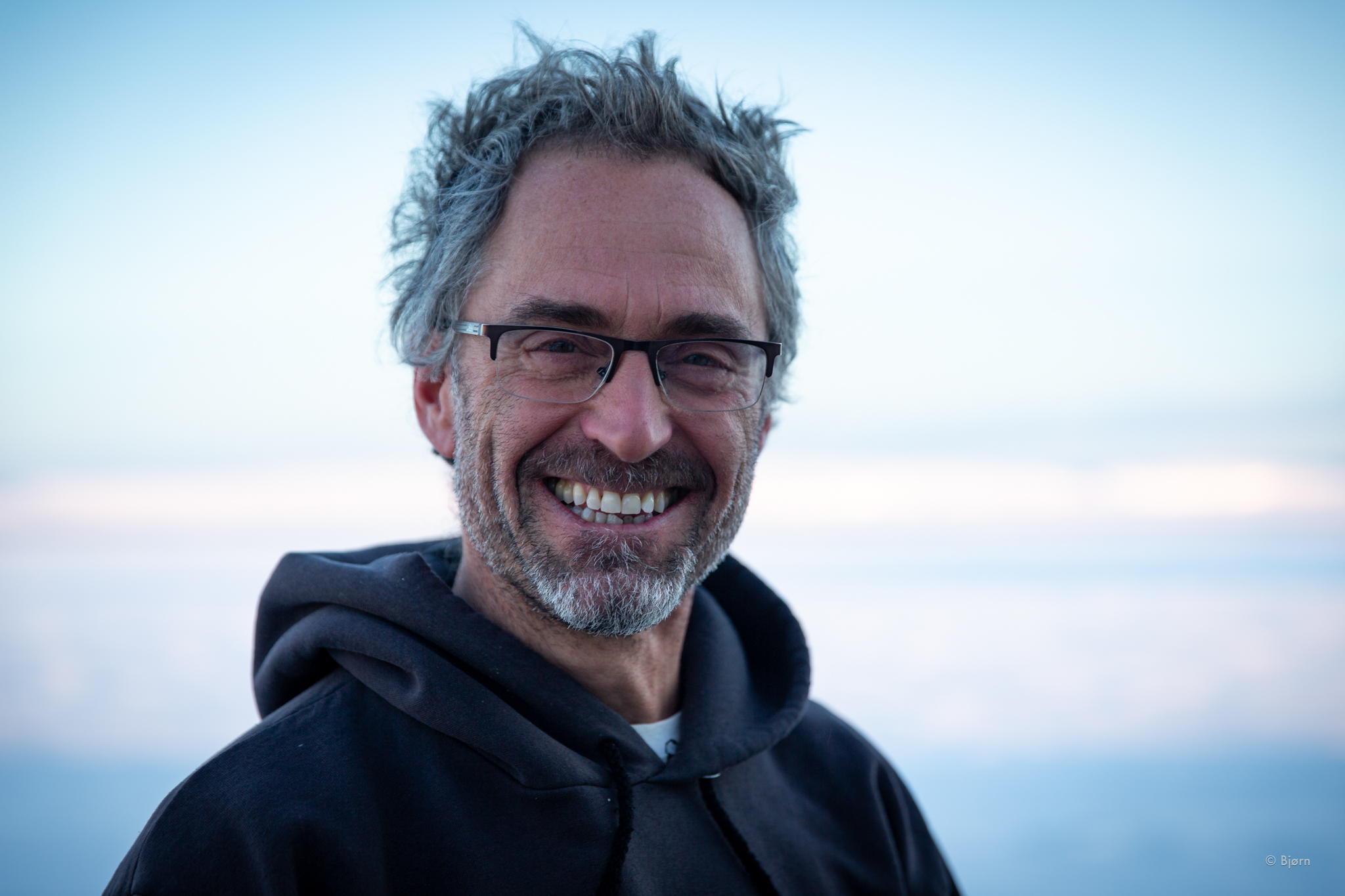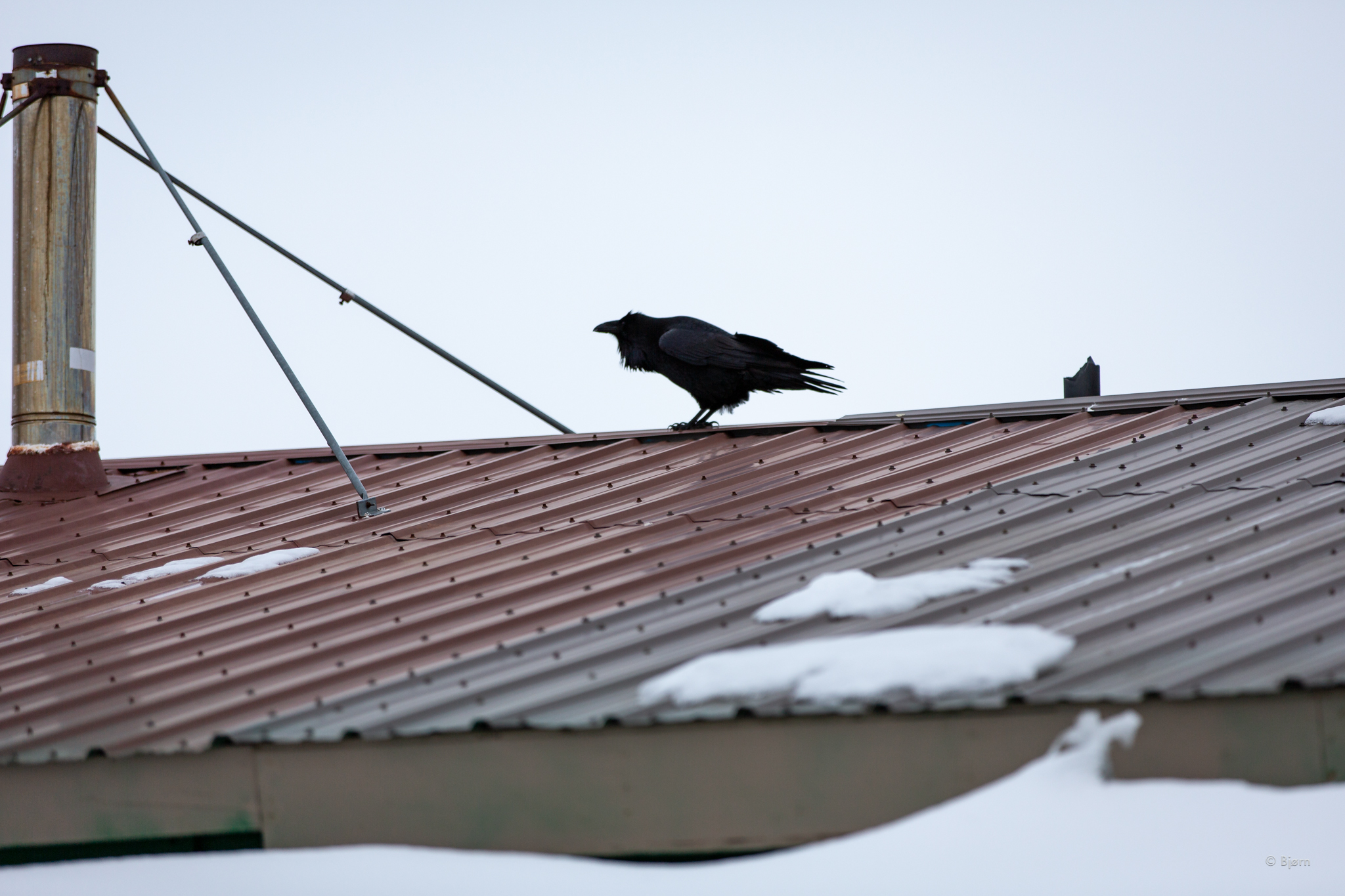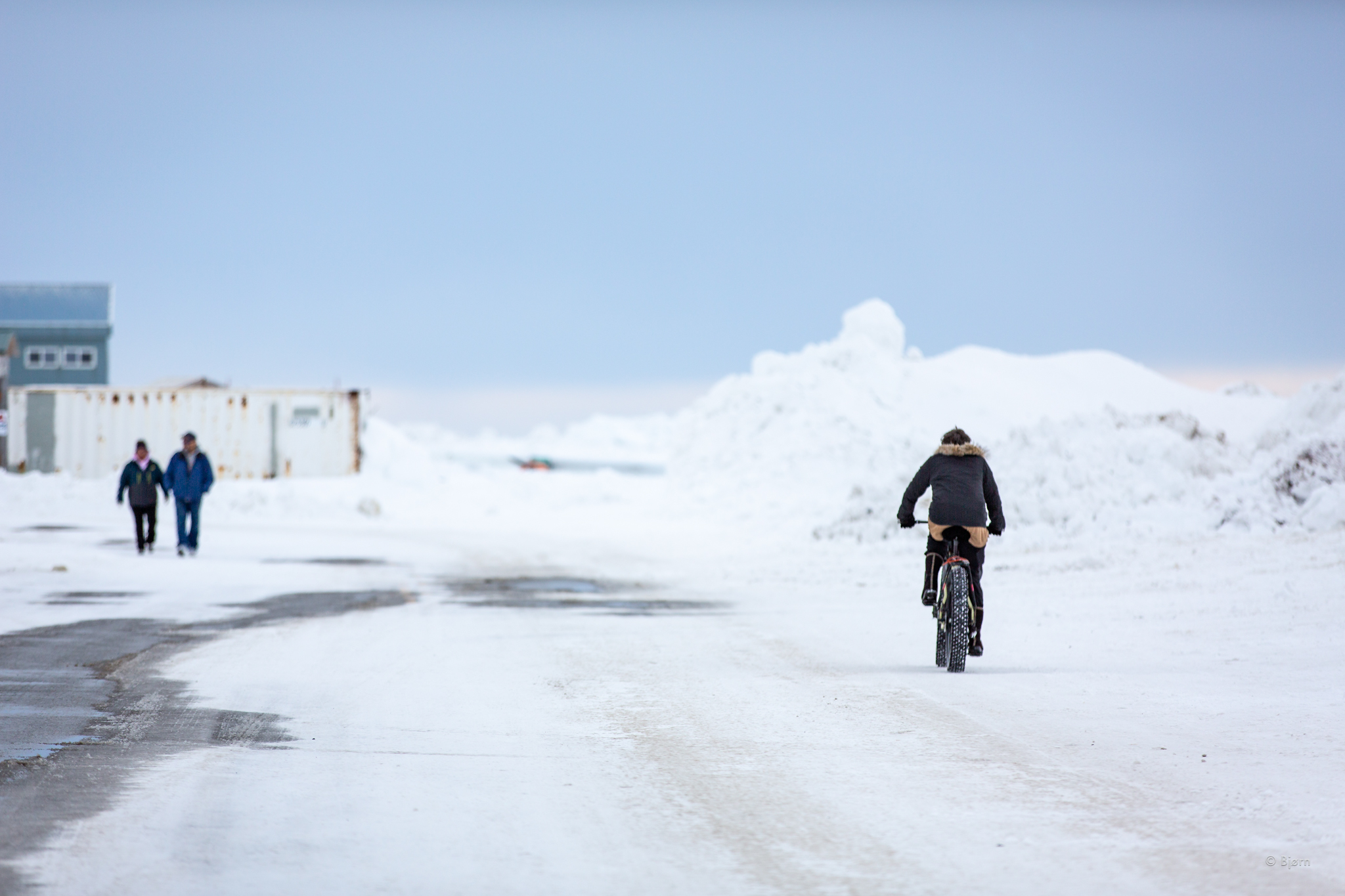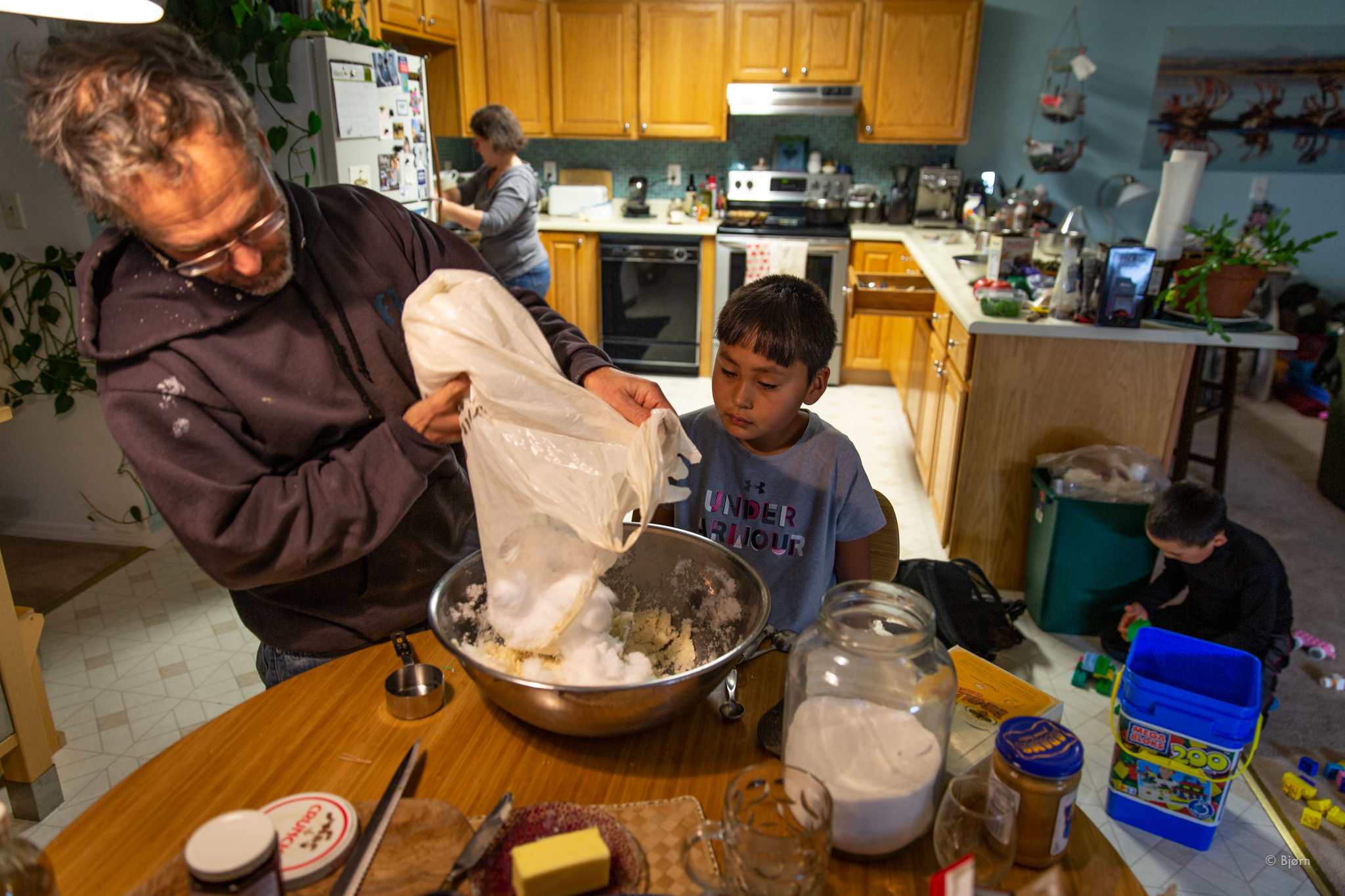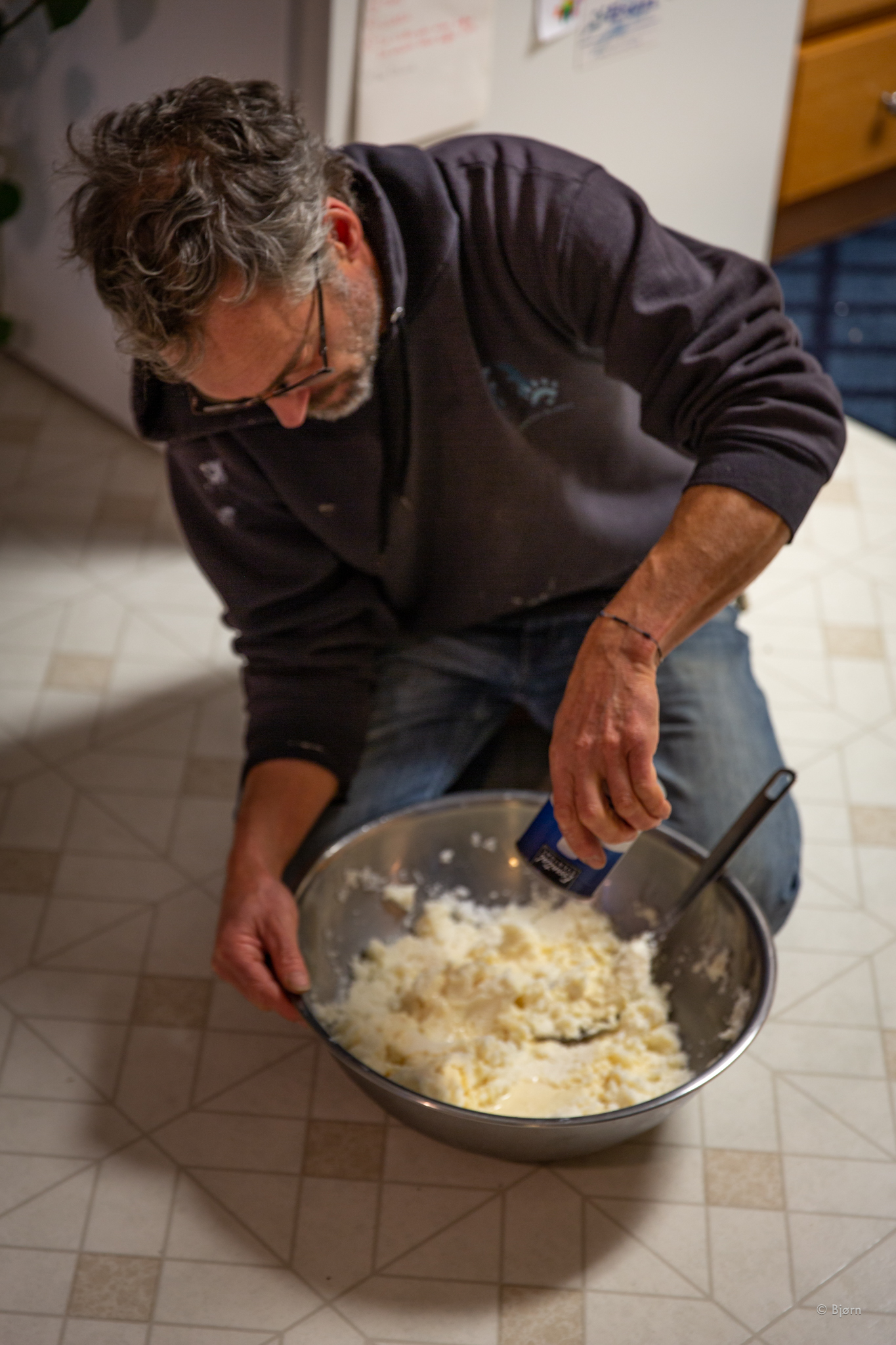After a winter of warm weather here in southern Alaska and watching as the northwest Arctic got hammered by six weeks of snowstorms, the forecast for our Kobuk traverse looked somewhat promising. The Bering and almost all the Chukchi Sea ice is gone. This means there is more warmth and more moisture where it otherwise should be cold and dry. The conditions when we left to fly north, however, looked encouraging. Maybe winter would return.
In Kotzebue, our friend Asuaq—a lifelong resident of the region, met us at the airport. After we assembled our bikes and strapped gear on, we rolled outside and felt the air and the surface of the snow. It was not as cold as one would expect for this time of year at this far-north latitude but it would do.
The following afternoon, after visiting with the good people at the Northwest Arctic Borough and our favorite native craft store—Sulianich Art Gallery—where I bought a trappers hat—we hit the trail. It was apparent that we were atop six weeks of snowstorm accumulation but the days were clear, people had been out and the trail was more than we could have expected. We were riding. We were underway.
Three days later, we ground hard through soft snow and small drifts into the second village on our route—Selawik. Our intention was to find someplace to stay for the night and to make an early break the following morning for a shelter cabin, which we figured at our slow pace would take a full day to reach.
Weeks before we began, people had warned us that there was a lot of overflow and open water on the Kobuk River. Everyone we’d met and interrogated about conditions offered us the same report. Since our arrival, however, the temperatures had been cold and we hoped that by the time we reached Ambler and began to come down the river, that more people would have traveled that way and the water would have frozen. The evening we pulled into Selawik, the air became heavy and the wind was warm.
After days of rosy cheeks, squeaky snow and a frosty beard, I was unprepared for the impending reality. Throughout the entire region rain and above freezing temperatures were in the forecast. Outside, we could feel it coming. From Selawik, there are options. There are other trails. But as we checked, every direction called for the same – warm and wet.
On winter fat-bike expeditions, we are not prepared for wet. We are prepared for cold. Not to mention that when deep snow thaws it becomes unconsolidated and entirely unrideable. Thankfully school was out and no one other than Kim was present in the library to hear me curse and moan. All of that, ‘you get what you get and don’t get upset’ talk is nonsense. She shushed me all the same.
The following evening, on a comfortable couch back in Kotzebue, after a fantastic meal of caribou and even better conversation with our friends Seth and Stacey, I started to doze off. With the book, ‘The Subtle Art of Not Giving a F**k,’ still in my hands, my mind returned to the trail. The sun was low. I was bundled in my fur hat and standing over my bike on a cold winter trail. I came back to and felt a pang of remorse. Losing winter and the freedom to explore is something I do give a f**k about. I set the book down and tried to be thankful for the wonderful, if much too short time we had had.
